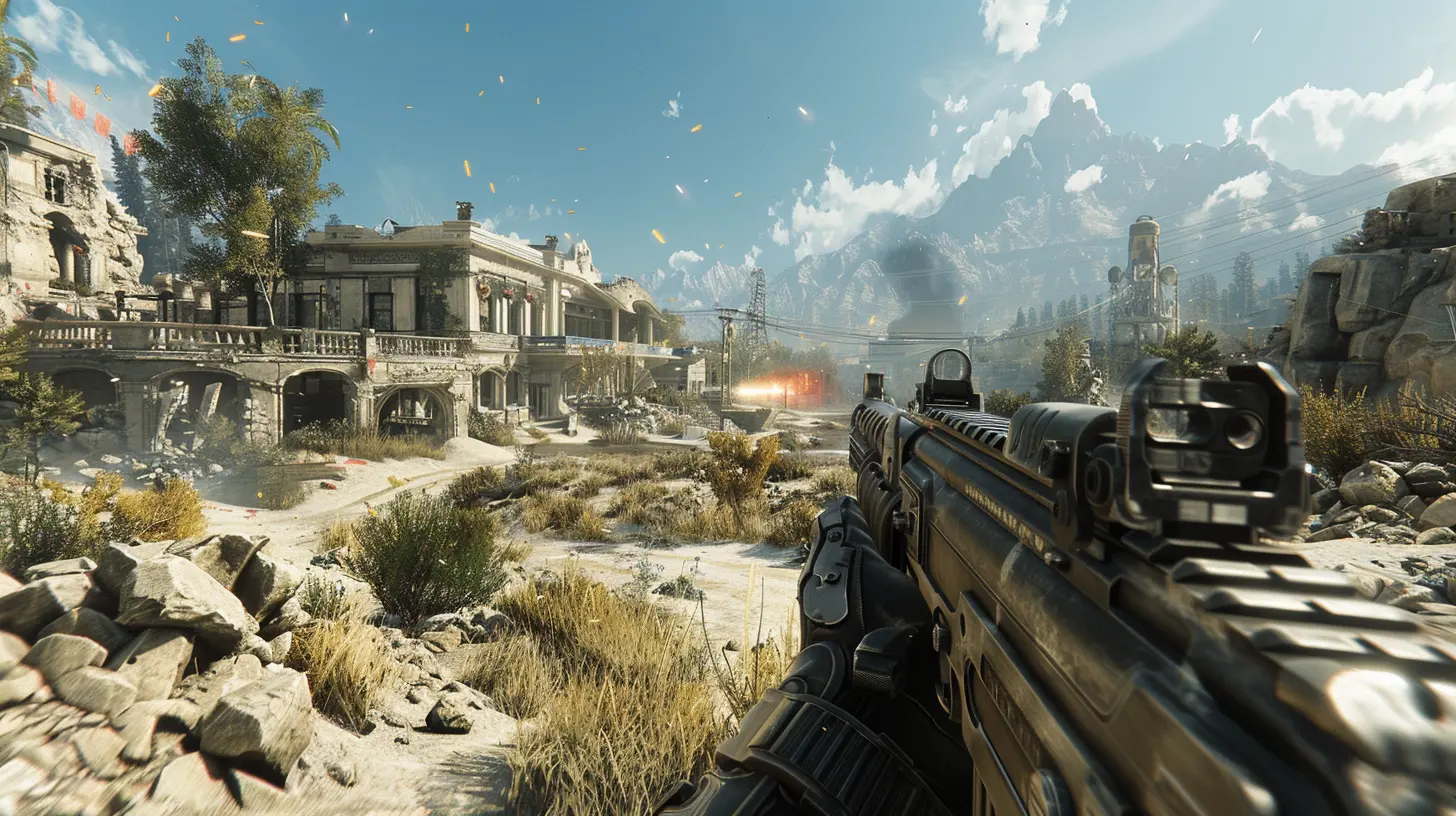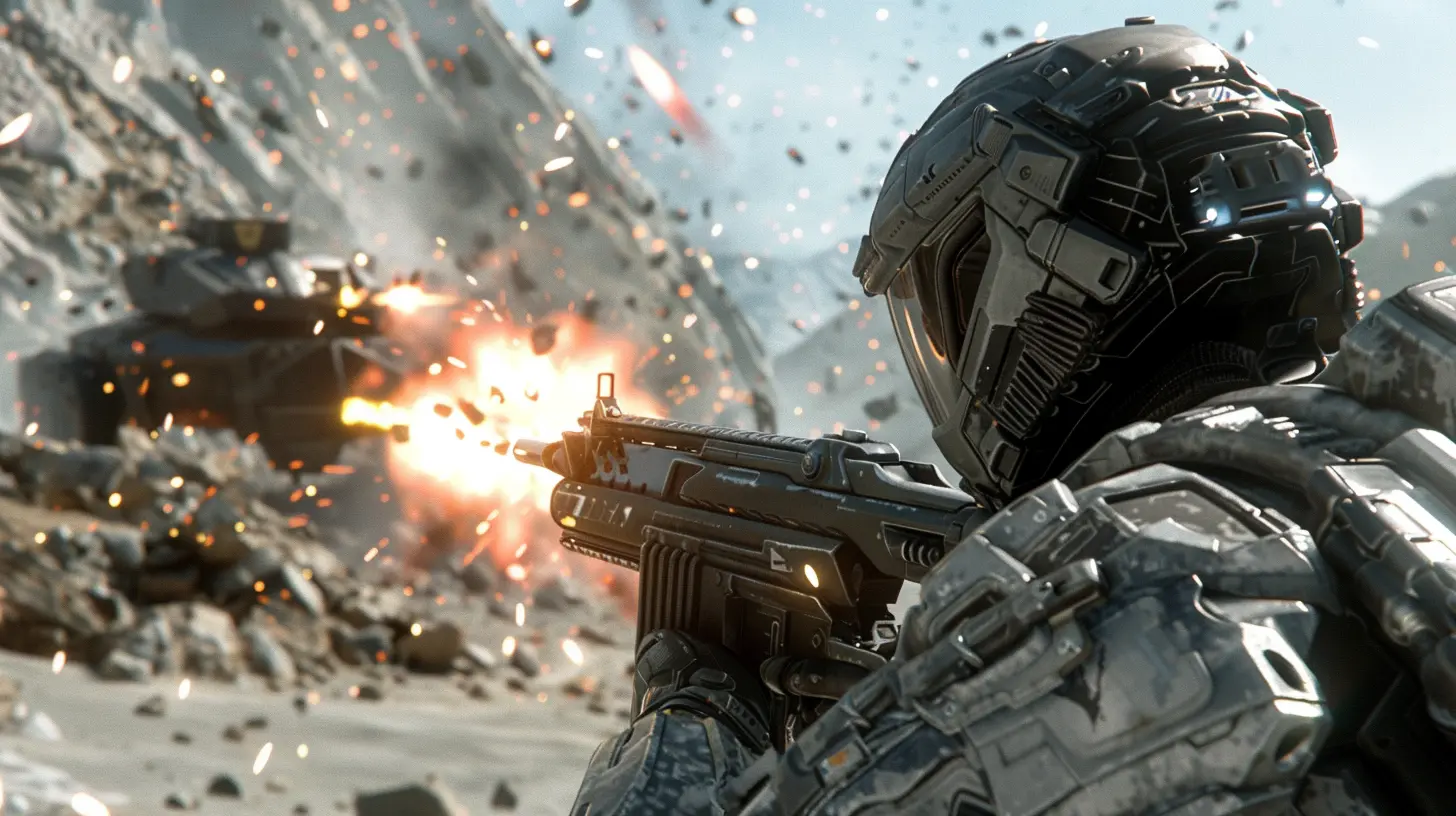Mastering Fast Reflexes in First-Person Shooter Games
5 November 2025
If you’ve ever been wiped out in a first-person shooter (FPS) game before you could even say “headshot,” you’re not alone. FPS games thrive on split-second decisions, and mastering fast reflexes can mean the difference between victory and respawning back at base. Whether you’re a casual gamer looking to climb the ranks or a seasoned player aiming for razor-sharp precision, leveling up your reflexes isn’t just for the elite—it’s something you can absolutely train and improve.
So grab your mouse, keyboard, or controller. Let’s dive into the tips and tricks that’ll have you reacting so fast, your enemies won’t know what hit them.
Why Reflexes Matter in FPS Games
Think of reflexes as your secret weapon. They’re the invisible force behind every quick flick of your crosshair, every sidestep to dodge enemy fire, and every perfectly timed reload. In the world of FPS games, milliseconds make all the difference. That’s right—your ability to react faster than your opponent means you gain the upper hand.But reflexes aren’t just about moving fast. They’re about making the right move at the right time. It’s the balance of precision, muscle memory, and situational awareness that separates good players from legendary ones. 
Can Reflexes Be Trained?
Here’s the good news: reflexes aren’t just something you’re born with—they’re completely trainable. Sure, some people might naturally have quicker reactions, but with consistent practice and a strategic approach, you can improve your speed over time. Think of it like hitting the gym for your brain and hands. The more you work on it, the stronger and faster you’ll become.Ready to put in some work? Below are some practical tips to start fine-tuning your reflexes and reaction speed.
1. Fine-Tune Your Gaming Setup
Let’s be honest—your gear matters. No amount of reflex training will bail you out if you’re playing on a laggy system with outdated peripherals. Here’s what to consider:- Monitor Refresh Rate & Response Time: A high refresh rate monitor (like 144Hz or 240Hz) minimizes motion blur and helps you see enemy movements in real-time. Pair it with low response time (1ms is ideal) for the smoothest experience.
- Gaming Mouse & DPI Settings: A gaming mouse with adjustable DPI settings lets you find that sweet spot for aiming precision. High DPI works for fast flicks, while lower DPI gives you better control for fine adjustments.
- Stable Internet Connection: Lag is your worst enemy. Ensure your internet is stable and your ping is as low as possible. A wired connection is always more reliable than Wi-Fi.
- Comfortable Setup: Ergonomics matter too. Keep your mouse, keyboard, and monitor at a comfortable height to reduce strain on your wrists and neck. 
2. Practice, Practice, Practice
It sounds obvious, right? But the way you practice is key. Spamming matches isn’t enough—you need deliberate and focused practice.- Training Modes: Most FPS games have built-in training ranges or aim trainers. Popular tools like Aim Lab and Kovaak’s are excellent for targeting reflex and precision improvement.
- Focus on Weak Spots: Struggling with flick shots? Missing headshots? Spend extra time practicing those specific areas until they no longer feel like a weakness.
- Consistency Over Time: Regular short practice sessions (20–30 minutes daily) are far more effective than marathon gaming sessions where fatigue sets in.
3. Embrace Muscle Memory
Muscle memory is like autopilot for your hands. It’s when your fingers instinctively know where to go without your brain needing to catch up. To build muscle memory:- Stick to a Sensitivity Setting: Constantly changing your mouse sensitivity throws your muscle memory off. Find a sweet spot and stick with it.
- Repeat, Repeat, Repeat: Tasks like reloading, aiming, and quick-switching weapons should be second nature. Repeat actions until they’re burned into your muscle memory.
Think of it this way: you want your hands to react like a pianist effortlessly hitting the right keys during a fast solo.
4. Improve Your Reaction Time
Reflexes rely heavily on reaction time. The faster your brain processes visual cues and sends signals to your hands, the quicker you can act.- Reaction Time Games: Games like "Human Benchmark" or "Zty.me" are fantastic for improving reaction speed. They’re simple, effective, and fun.
- Color & Light Cues: Train yourself to react to visual cues quickly. For instance, practice clicking as soon as you see a specific color or indicator on your screen. This mimics spotting an enemy in your peripheral vision.
- Audio Awareness: Don’t underestimate sound. Listen for enemy footsteps, reload sounds, or distant gunfire. Sometimes, reacting to sound cues can be faster than relying on visuals alone.
5. Master Situational Awareness
Reflexes aren’t just about speed—they’re about making smart decisions in the blink of an eye. Enter: situational awareness.- Map Knowledge: Study the maps you play on like your life depends on it (because in-game, it does). Knowing where enemies are likely to spawn, camp, or flank allows you to anticipate their moves before they even make them.
- Keep Your Head on a Swivel: Constantly scan your surroundings. Don’t get tunnel vision on one area—danger can come from anywhere.
- Predict Enemy Behavior: Good reflexes are proactive, not just reactive. Pay attention to player habits. Does one guy always rush mid-lane with a sniper? Predict it and pre-aim accordingly.
6. Stay Physically and Mentally Sharp
Your body and mind are part of your gaming gear. Keeping sharp physically and mentally can boost your reflexes in major ways.- Stay Hydrated: Dehydration can slow down your reaction time. Keep water nearby during those long gaming sessions.
- Rest and Sleep: Sleep isn’t just for energy—it’s also when your brain processes what you’ve learned. A well-rested brain reacts faster.
- Healthy Diet: Foods rich in omega-3 fatty acids (like fish or walnuts) and antioxidants (like blueberries) keep your brain sharp and ready to react.
- Short Breaks: Eye strain from staring at the screen too long can mess with your accuracy. Take 5–10 minute breaks every hour to reset.
7. Challenge Yourself
Want to see real improvements? Push yourself outside your comfort zone. Play against those who are better than you. Sure, you’ll get wrecked at first, but you’ll also start catching on to higher-level strategies and faster gameplay.- Play Higher Sensitivity Settings: Temporarily increase your mouse sensitivity to force your reflexes to adapt.
- Switch Roles or Weapons: If you’re always the sniper, try going for a run-and-gun playstyle. This forces you to react to new situations and adjust your strategies.
8. Stay Positive and Patient
Improving your reflexes isn’t going to happen overnight, and that’s okay. Every match, every practice session brings you one step closer to mastery. Instead of getting frustrated when you miss a shot or lose a game, use it as a learning opportunity. Celebrate small wins, like landing a clean headshot or reacting just a fraction of a second faster than usual.Remember, even professional gamers didn’t start at the top. They climbed the ladder with the same tools you have: practice, patience, and persistence.
Final Thoughts
Mastering fast reflexes in first-person shooter games is just like leveling up in the game itself. With the right strategies, tools, and mindset, you’ll see real improvement. And the best part? Those razor-sharp reflexes won’t just help you in FPS games—they can translate to better hand-eye coordination and quicker reactions in other aspects of life.Now get out there, sharpen those reflexes, and dominate the leaderboard. You’ve got this!
all images in this post were generated using AI tools
Category:
First Person ShooterAuthor:

Tina Fisher
Discussion
rate this article
1 comments
Camille Wallace
This article is a fantastic resource for anyone looking to enhance their FPS skills. Your insights into the importance of reaction time and practice routines are invaluable. I appreciate the tips on customizing settings and training techniques. Can’t wait to put these strategies into action—thank you for sharing!
November 5, 2025 at 4:22 AM

Tina Fisher
Thank you for your kind words! I'm glad you found the article helpful. Best of luck with your practice!


